Planning worship?
Check out our sister site, ZeteoSearch.org,
for 20+ additional resources related to your search.
- |
User Links
Person Results
Christopher Edwin Willing
1830 - 1904 Composer of "ALSTONE" in The Cyber Hymnal Christopher Edwin Willing; Devon, England, 1830
Evangelical Lutheran Hymnal, 1908
Christopher Edwin Willing
Anna Hoppe
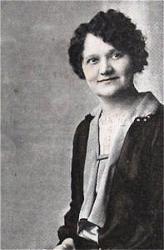
1889 - 1941 Person Name: Anna B. Hoppe Author of "Precious Child, So Sweetly Sleeping" in Timeless Truths Anna Hoppe was born on May 7, 1889 in Milwaukee, Wisconsin. She left school after the eighth grade and worked as a stenographer. She began writing patriotic verses when she was very young and by the age of 25 she was writing spiritual poetry. After some of her poems appeared in the Northwestern Lutheran, a periodical of the Wisconsin Evangelical Lutheran Synod, they came to the attention of Dr. Adolf Hult of Augustana Seminary, Rock Island, Illinois. He influenced her to write her Songs for the Church Year (1928). Several hymnals include her work, which was usually set to traditional chorale melodies, although she also made a number of translations. She died on August 2, 1941 in Milwaukee, Wisconsin.
NN, from Cyber Hymnal
Anna Hoppe
Wolfgang Christoph Dessler
1660 - 1722 Person Name: Wolfgang C. Dessler Author of "My Soul's Best Friend, What Joy and Blessing" in The Lutheran Hymnal Dessler, Wolfgang Christoph, son of Nicolaus Dessler, jeweller, at Nürnberg, was born at Nürnberg, Feb. 11, 1660. His father wished him to become a goldsmith, but, as he was not physically suited for this, he was permitted to begin the study of theology at the University of Altdorf. His poverty and bodily weakness forced him to leave before completing his course, and, returning to Nurnberg, he supported himself there as a proof reader. Becoming acquainted with Erasmus Finx or Francisci, then residing in Nürnberg, he was employed by Finx as his amanuensis, and at his request translated many foreign religious works into German. In 1705 he was appointed Conrector of the School of the Holy Ghost at Nürnberg, where he laboured with zeal and acceptance till
1720, when, by a stroke of paralysis, he was forced to resign. Finally, after an illness which lasted about 35 weeks, he died at Nürnberg, March 11,1722. Of his hymns, in all over 100, the best appeared, many with melodies by himself, in his volume of meditations entitled:—
Gottgeheiligter Christen Nützlich Ergetzende Seelenlust unter den Blumen Gottliches Worts, oder andächtige Betrachtungen und Gedanken über unterschiedliche erläuterte Schriftspruche, &c. Nürnberg, 1692 [Berlin] (Koch, iii. 531-535, and iv. 566-567).
From this work (the references to which have been kindly supplied by Dr. Zahn of Altdorf, from his copy), five hymns have been translated into English, viz.:—
Hymns in English common use:—
i. Ich lass dich nicht, du musst mein Jesus bleiben. [Constancy to Christ.] Founded on Genesis xxxii. 36. First published 1692, as above, p. 553, along with Meditation xviii., which is entitled "The striving love." Wetzel (A. H., vol. i., pt. iv., p. 20) says it was sung, at her re¬quest, Sept. 5, 1726, at the deathbed of Christiana Eberhardina, a pious Queen of Poland. In the Berlin Geistliche Liedersegen
Wolfgang Christoph Dessler
Carolyn McDade
b. 1935 Author of "Long before the Night (This Ancient Love)" in Voices United
Carolyn McDade
Thomas Haweis

1734 - 1820 Author of ""Come and welcome"" in Laudes Domini Thomas Haweis (b. Redruth, Cornwall, England, 1734; d. Bath, England, 1820) Initially apprenticed to a surgeon and pharmacist, Haweis decided to study for the ministry at Oxford and was ordained in the Church of England in 1757. He served as curate of St. Mary Magdalen Church, Oxford, but was removed by the bishop from that position because of his Methodist leanings. He also was an assistant to Martin Madan at Locke Hospital, London. In 1764 he became rector of All Saints Church in Aldwinkle, Northamptonshire, and later served as administrator at Trevecca College, Wales, a school founded by the Countess of Huntingdon, whom Haweis served as chaplain. After completing advanced studies at Cambridge, he published a Bible commentary and a volume on church history. Haweis was strongly interested in missions and helped to found the London Mission Society. His hymn texts and tunes were published in Carmino Christo, or Hymns to the Savior (1792, expanded 1808).
Bert Polman
============================
Haweis, Thomas, LL.B., M.D., born at Truro, Cornwall, 1732. After practising for a time as a Physician, he entered Christ's College, Cambridge, where he graduated. Taking Holy Orders, he became Assistant Preacher to M. Madan at the Lock Hospital, London, and subsequently Rector of All Saints, Aldwincle, Northamptonshire. He was also Chaplain to Lady Huntingdon, and for several years officiated at her Chapel in Bath. He died at Bath, Feb. 11, 1820. He published several prose works, including A History of the Church, A Translation of the New Testament, and A Commentary on the Holy Bible. His hymns, a few of which are of more than ordinary merit, were published in his
Carmina Christo; or, Hymns to the Saviour. Designed for the Use and Comfort of Those who worship the Lamb that was slain. Bath, S. Hayward, 1792 (139 hymns), enlarged. London, 1808 (256 hymns). In 1794, or sometime after, but before the enlarged edition was published, two hymns "For the Fast-day, Feb. 28, 1794," were added to the first edition. These were, "Big with events, another year," and "Still o'er the deep the cannon's roar."
The most popular and widely used of his hymns are, "Behold the Lamb of God, Who bore," &c.; "Enthroned on high, Almighty Lord"; and “O Thou from Whom all goodness flows." The rest, all being from Carmina Christo, first edition 1792, are:—
1. Dark was the night and cold the ground. Gethsemane.
2. From the cross uplifted high. Christ in Glory.
3. Great Spirit, by Whose mighty power. Whitsuntide.
4. Submissive to Thy will, my God. Resignation.
5. The happy morn is come. Easter.
6. Thou Lamb of God, that on the tree. Good Friday. The hymn, "Thy Head, the crown of thorns that wears," in Stryker & Main's Church Praise Book, N. Y., 1882, begins with st. ii. of this hymn.
7. To Thee, my God and Saviour, My heart, &c. Praise for Redemption.
--John Julian, Dictionary of Hymnology (1907)
Thomas Haweis
Claude Goudimel
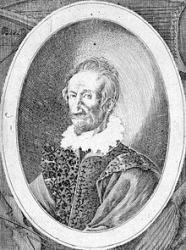
1514 - 1572 Person Name: Claude Goudimel, c. 1505-1572 Composer of "O NOSTRE DIEU (Geneva 8)" in Hymns for Youth The music of Claude Goudimel (b. Besançon, France, c. 1505; d. Lyons, France, 1572) was first published in Paris, and by 1551 he was composing harmonizations for some Genevan psalm tunes-initially for use by both Roman Catholics and Protestants. He became a Calvinist in 1557 while living in the Huguenot community in Metz. When the complete Genevan Psalter with its unison melodies was published in 1562, Goudimel began to compose various polyphonic settings of all the Genevan tunes. He actually composed three complete harmonizations of the Genevan Psalter, usually with the tune in the tenor part: simple hymn-style settings (1564), slightly more complicated harmonizations (1565), and quite elaborate, motet-like settings (1565-1566). The various Goudimel settings became popular throughout Calvinist Europe, both for domestic singing and later for use as organ harmonizations in church. Goudimel was one of the victims of the St. Bartholomew's Day massacre of Huguenots, which occurred throughout France.
Bert Polman
Claude Goudimel
Allen William Chatfield
1808 - 1896 Person Name: Allen W. Chatfield Translator of "I first invented in Thy praise" in Songs and Hymns of the Earliest Greek Christian Poets Chatfield, Allen William, M.A., born at Chatteris, Oct. 2nd, 1808, and educated at Charterhouse School and Trinity College, Cambridge, where he was Bell's Univ. Scholar and Members' Prizeman. He graduated in 1831, taking a first class in classical honours. Taking Holy Orders in 1832, he was from 1833 to 1847 Vicar of Stotfold, Bedfordshire; and since 1847 Vicar of Much-Marcle, Herefordshire. Mr. Chatfield has published various Sermons from time to time. His Litany, &c. [Prayer Book] in Greek verse is admirable, and has been commended by many eminent scholars. His Songs and Hymns of Earliest Greek Christian Poets, Bishops, and others, translated into English Verse, 1876, has not received the attention of hymnal compilers which it merits. One hymn therefrom, "Lord Jesu, think on me," is a specimen of others of equal merit, which might be adopted with advantage. He died Jan. 10, 1896.
-- John Julian, Dictionary of Hymnology (1907)
Allen William Chatfield
E. Cronenwett
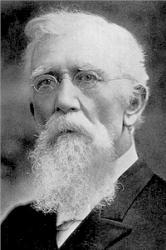
1841 - 1931 Person Name: Emmaneul Cronenwett Translator of "The New-Born Child This Early Morn" in The Cyber Hymnal Cronenwett, Emmanuel, a Lutheran Pastor at Butler, Pennsylvania, U.S.A., contributed to the Evangelical Lutheran Hymnal, Published by Order of the Evangelical Lutheran Joint Synod of Ohio and other States, 1880, in addition to 20 translations from the German, the following original hymns, some of which rank with the best in the collection:—
1. A holy state is wedded life. Domestic Worship.
2. Faith is wisdom from on high. Faith.
3. Heavenly Father, Jesus taught us. Prayer.
4. Lord, Thine omniscience I adore. Omniscience.
5. O Triune God, Thy blessing great. Domestic Worship.
6. Of omniscient grace I sing. Omniscience.
7. Of Zion's honour angels sing. Ordination.
8. The precepts of the word are pure. Holy Scripture.
9. The Spirit's fruits are peace and love. Fruits of the Spirit.
10. 'Tis a marvel in our eyes. Foundation Stone laying of a Church.
11. To Thee, our fathers' God, we bow. Domestic Worship.
12. Unto Caesar let us render. National Thanksgiving.
13. We have a sure, prophetic word. Holy Scripture.
--John Julian, Dictionary of Hymnology (1907)
E. Cronenwett
Ludvig Mathias Lindeman
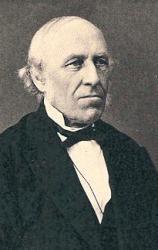
1812 - 1887 Person Name: L. M. Lindeman, 1812-87 Arranger of "DURCH ADAMS FALL" in Evangelical Lutheran Hymnary Ludvig M. Lindeman (b. 1812; d. 1887) was a Norwegian composer and organist. Born in Trondheim, he studied theology in Oslo where he remained the rest of his life. In 1839 he succeeded his brother as the organist and cantor of Oslo Cathedral, a position he held for 48 years up until his death. Lindeman was appointed Knight of the Royal Norwegian Order of St. Olav, and was invited to both help christen the new organ in Royal Albert Hall in London, as well as compose for the coronation of King Oscar II and Queen Sophie of Sweden. In 1883, he and his son started the Organist School in Oslo. Lindeman is perhaps best known for his arrangements of Norwegiam folk tales; over the course of his life he collected over 3000 folk melodies and tunes.
Laura de Jong
Ludvig Mathias Lindeman
Theodore E. Perkins

1831 - 1912 Person Name: Theodore Edson Perkins Composer of "[Hark! the mighty tones sublime]" in The Cyber Hymnal Theodore E. Perkins was born at Poughkeepsie, on the Hudson, N.Y., July 21, 1831. His father was a Baptist clergyman. The family of ten brothers and sisters sang and played various instruments, forming among themselves both choir and orchestra. His musical education began at the early age of three years. During his father's pastorate at Hamilton, N. Y., the choir rehearsals were often held at the parsonage, and the leader used to place the three-year-old on a small stool, on the table around which the choir was assembled, giving him a chance to both see and hear. Later on he played the violincello in church, standing on a stool in order to finger the instrument.
The home gatherings — especially on Thanksgiving Day, are the recollections among the happiest of his childhood. His father became pastor of the Berean Baptist Church in New York City, in 1839, giving him the opportunity of studying the pianoforte, of which he became a proficient player. His fine alto voice soon gave him notoriety. At the age of nineteen while filling a position as clerk in New York, all his spare time was given to the study of voice and piano. In 1851 he went to Hamilton, N. Y., taught music in Madison University (now Colgate), and in the Female Seminary.
In 1854 he went to Port Jervis, N. Y., where he taught singing school, and April 30, 1855, married Mary Frances Caskey, who was for years his soprano soloist in many musical Festivals and Conventions. Soon after marriage he removed to Salem, N. J., where his lifework as singing school teacher really began, including Bridgeton and prominent towns in southern New Jersey. During the summer of 1856 he and his wife were pupils of the Normal Academy of Music at North Reading, Mass., conducted by Drs. Lowell Mason and Geo. F. Root. During 1856-1858 he was given the position of assistant teacher and manager. His association with these two great men gave an inspiration to all his future work.
In 1859 he was co-principal with Wm. B. Bradbury at the Normal Academy of Music, Geneseo, N. Y. He remained at Geneseo until 1863. Professor Perkins also held very successful schools in North Pelham Province of Ontario, Canada, and in 1864-1868 was principal in schools at Tunkhannock and Meadville, Pa.
In 1860, The Olive Branch, his first book of church music, was published by F. J. Huntington, New York City, the sales reaching 100,000. Next was Oriental, which sold over 30,000. The Union, Glees and Anthems, and Sabbath Anthems followed ; then The Sacred Lute, which sold over 300,000. His Sunday-school books commenced with The Evergreen, followed by the Shining Star and New Shining Star. Then came Psalm King, which was the last of the books published by Mr. Huntington. Hallowed Songs was published by Philip Phillips; The Sunday School Banner was published by Wm. B. Bradbury. The Royal Standard was published in Toronto, Canada. The Golden Promise, Sabbath Carols, The Mount Zion Collection were published under his own supervision.
His Free Sunday School Songs several times numbered over 500,000 a month. Coronation Songs with Rev. Dr. Deems as hymn editor was published by A. S. Barnes Co., who also published Psalms and Hymns and Spiritual Songs, in which Dr. C. S. Robinson was hymn editor, who with Professor Perkins edited Calvary Songs, published by the American S. S. Union. Gospel Tent Songs was evangelical. The Safe-Guard Singer was his temperance book.
Mr. Perkins was musical director in the following churches in Brooklyn: The Lafayette Avenue Presbyterian Church, Rev. Dr. Cuyler; Strong Place Baptist Church, Rev. E. E. L. Taylor, D. D.; Madison Avenue Baptist Church, Rev. H. G. Weston, D. D., L. L. D.; Fifth Avenue Presbyterian Church, Rev. Dr. Rice, followed by Dr. John Hall; The Memorial Presbyterian Church, Rev. Dr. C. S. Robinson, who was his close friend; The Church of the Holy Trinity, Rev. Dr. Tyng, Jr. ; Trinity Baptist Church, Rev. Dr. J. B. Simmons, and Washington Square M. E. Church.
In Philadelphia: The Fifth Baptist Church, Rev. Dr. Chase; The Eleventh Baptist Church, Rev. Dr. Colman; The Tabernacle M. E. Church, Rev. George Gaul, D. D. He was leader and singer in Evangelistic Services, at the Rink, The Old Madison Square Garden and Cooper Union, all of New York City. The music of the first great meeting of the world's Evangelical Alliance, held for ten days in New York City, was under his direction, as was the first National Sunday School convention, held in Newark, N. J. He was also conductor at the Golden Anniversary of the Female Guardian Society, leading a chorus of forty-two hundred children. In the opening chorus, Great is the Lord, by Dr. Calcott, the word "Great" was given with so much decision and power that the clergymen on the platform sprang to their feet and remained standing until the chorus was finished.
He taught voice culture in Princeton and Lafayette Universities, The Union Theological Seminary, New York City; Crozer Seminary, Chester, Pa., and organized the music department of Temple University, Philadelphia, continuing in charge four years. He had charge of the children's choir of Howard Mission, New York City, for twenty-five years, and thinks that some of the happiest and most restful of the working hours were spent in teaching the poor children of the fourth and sixth wards to sing the Gospel. Mr. Sankey said to Mr. Perkins that " Jesus of Nazareth was my banner song for eight years." Jesus is Mine has been sung at the Christian's death-bed, the grave, and once as the convict was going to the scaffold.
His Christmas Carol Sweetly Carol had a very large sale in this country, and was republished in England, France, Italy, and Germany.
For a period of forty years he has made the study of the voice special work. The most thorough investigations of the voice and its possibilities were made with the assistance of the late John Howard, extending over a period of twenty-five years, during which he has had the care of over two thousand voices. He published a work entitled, Physiological Yoice Culture, edited by his son, the late T. Edward Perkins, M. D., physician and throat specialist of Philadelphia. Mr. Perkins also completed a method of voice culture based on the principles of John Howard's Physiology of Artistic Singing."
During these years of work he has found time to edit thirty-four books of church, Sunday-school, day-school, and glee music, the larger portion having been previously mentioned. Also songs and ballads in sheet form, and a cantata entitled, The Excursion, libretto by Fanny Crosby, with whom there has existed an unbroken friendship for over forty years.
-Biography of Gospel Song and hymn Writers
Theodore E. Perkins
Walford Davies

1869 - 1941 Person Name: Henry Walford Davies Composer of "PENTATONE" in The Cyber Hymnal
Walford Davies
J. Lincoln Hall
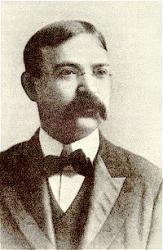
1866 - 1930 Composer of "[I heard the bells, they seemed to say]" in The Service of Praise Used pseudonyms Maurice A. Clifton and Arthur Wilton.
===============
Joseph Lincoln Hall DMus USA 1866-1930. Born in Philadelphia, PA, to musical parents, he also was musical, having a good tenor voice. He was an organist and music teacher. At age 19 he led a 100 member choir for 10 years. He studied music and graduated with honors from the University of PA, later receiving a Doctor of Music degree from Harriman University, from which he was an alumnus. In 1896 he married Eva Victoria Withington, and they had four children. Three lived to adulthood, Lincoln, Ralph, and Philip. A musician, he was a great song leader and choral conductor, conducting campmeeting choirs in PA, OH, and FL, at the Gainesville Bible Conference as well. He became a gospel song composer, arranger, editor, and publisher. He wrote cantatas, oratorios, choir anthems, and hundreds of gospel songs. He also edited several hymnals. Along with Irvin Mack, he founded the Hall-Mack Publishing Company (later Rodeheaver). They published nine songbooks. He was a member of the 7th Street Methodist Episcopal Church in Philadelphia. He died in Philadelphia.
John Perry
J. Lincoln Hall
James Nevett Steele
1850 - 1916 Person Name: J. N. S. Composer of "[What child is this, who, laid to rest]" in Hymns and Carols Set to Music
James Nevett Steele
Christopher Dearnley
1930 - 2000 Person Name: Christopher Dearnley, 1939-2000 Arranger of "GREENSLEEVES" in Common Praise
Christopher Dearnley
Frans Michael Franzén

1772 - 1847 Person Name: Frans Mikael Franzén Author of "Look to Jesus Christ Thy Saviour" in The Hymnal and Order of Service Franzén, Franz Michael, was born at Uleabôrg, Finland, in 1772, and educated at the University of Abo, where he became Librarian and Professor of Literary History. He was subsequently Minister at Kumla, Orebro, Sweden, and then of Santa Clara, in Stockholm. He was consecrated Bishop of Hernosand, in 1841, and died there in 1847. (See Supplement to Longfellow's Poets and Poetry of Europe.) Of his pieces one is in English common use. It begins "Jesum haf i ständigt minne," translated by Mrs. Charles in her Christian Life in Song, 1858, p. 250, as "Jesus in Thy memory keep" (Looking unto Jesus). Usually it begins with stanza ii., "Look to Jesus, till, reviving."
--John Julian, Dictionary of Hymnology, Appendix, Part II (1907)
Frans Michael Franzén
Stanley M. Wiersma
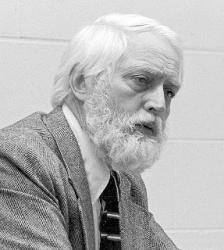
1930 - 1986 Person Name: Stanley M. Wiersma, 1930- Author of "O Lord, Our Lord" in Hymns for Youth Pseudonym: Sietze Buning
**********
Stanley Marvin Wiersma (b. Orange City, IA, 1930; d. Amsterdam, the Netherlands, 1986) was a poet and professor of English at Calvin College, Grand Rapids, Michigan, from 1959 until his sudden death in 1986. He attended Calvin as an undergraduate and received a Ph.D. from the University of Wisconsin in 1959. His love for the Genevan psalms is reflected in the two books of poetry for which he is most widely known: Purpaleanie and Other Permutations (1978) and Style and Class (1982), both written under the pseudonym Sietze Buning. He also wrote More Than the Ear Discovers: God in the Plays of Christopher Fry and translated many Dutch poems and hymn texts into English, including the children's hymns published in All Will Be New (1982).
Bert Polman
Stanley M. Wiersma
Justus Gesenius
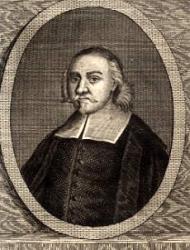
1601 - 1673 Person Name: J. Gesenius, 1601-73 Author of "Before Thy Throne I Now Appear" in Evangelical Lutheran Hymnary Gesenius, Justus, D.D., son of Joachim Gesenius, pastor at Esbeck, near Lauenstein, Hannover; was born at Esbeck, July 6, 1601. He studied at the Universities of Helmstedt and Jena, graduating M.A at Jena in 1628. In 1629 he became pastor of St. Magnus's Church, Brunswick; in 1636 court chaplain and preacher at the Cathedral in Hildesheim; and in 1642 chief court preacher, consistorialrath, and general superintendent at Hannover. He died at Hannover, Sept. 18, 1673 (Koch, iii 230-237; Allgemeine Deutsche Biographie, ix. 87-88; Bode, p. 76, &c).
Gesenius was an accomplished and influential theologian, a famous preacher, and distinguished himself by his efforts to further the catechetical instruction of the children of his district. Along with D. Denicke (q.v.) he edited the Hannoverian hymnbooks of 1646-1660. Both he and Denicke aimed at reducing the older German hymns to correctness of style according to the poetical canons of Martin Opitz; not so much interfering with the theology or making the authors speak a terminology foreign to them. Consequently their recasts, while setting a bad example, and while often destroying much of the force and freshness of the originals, were not by any means so objectionable as the recasts of the Rationalistic period, and moreover were soon widely accepted.
As no authors' names are given in the Hannoverian hymnbooks, it is difficult to assign the authorship of the new hymns and recasts therein contained. The following is generally, and apparently with reason, ascribed to Gesenius:
Wenn meine Sünd' mich kränken. Passiontide. His finest hymn as regards depth, warmth, and finish. First published in the Hannover Gesang-Buch 1646, No. 49, in 8 stanzas of 7 lines. It has been called a recast of the hymn "Hilf Gott, dass mir gelinge," but bears not the slightest resemblance to it. Included in Crüger's Praxis, 1656, and many later collections, as the Berlin Geistliche Lieder S., ed. 1863, No. 277. By a not unjust retribution it was soon recast, and appeared in the Lüneburg Gesang-Buch, 1661, as "Wenn mich die Sunden kränken." Translated as:—
1. When guilt and shame are raising. In full, by J. C. Jacobi, in pt. ii., 1725, of his Psalter Germanica, p. 4 (1732, p. 34). In the Moravian HymnBook of 1789, No. 106, it is altered to “O Lord, when condemnation"; and in the edition 1886, it begins with st. v., "Lord, let Thy bitter passion." A cento of stanzas ii., iii., v., from the Moravian Hymn Book, 1801, was adopted by Montgomery in his Christian Psalmist, 1825, beginning, "O wonder far exceeding," and this is in the New Zealand Hymnal. 1872.
2. 0 Lord, when my sins grieve me. A good translation of stanzas i., ii., iv., v., by A. T. Russell, as No. 81 in his Psalms & Hymns, 1851.
3. When sorrow and remorse. In full, by Miss Winkworth in her Lyra Germanica, 1st Ser., 1855, p. 74. A cento consisting of lines 1-4 of stanzas i., iv.—vi., and of stanza vii., rewritten to S.M., is in the Pennsylvanian Lutheran Church Book, 1868.
4. 0 Lord, when condemnation. A full and good translation, included as No. 84 in the 1857 ed. of Mercer's The Church Psalter and Hymnbook. Probably by Mr. Mercer, but mainly taken from the Moravian Hymnbook, 1789, and from Miss Winkworth. Repeated, abridged, in his Oxford ed., 1864, No. 149, and in the Toronto HymnBook, 1862.
5. When o'er my sins I sorrow. A good translation, based on her 1855 version, and omitting stanzas ii.—iv., by Miss Winkworth, as No. 48 in her Chorale Book for England, 1863. [Rev. James Mearns, M.A.]
-- John Julian, Dictionary of Hymnology (1907)
Justus Gesenius
Ron Harris
b. 1941 Person Name: R. H. Author of "My Master’s House" in Favorites Number 9 Harris, Ronald S.; composer, author, arranger; b. 12-16-41, Los Angeles, Calif.
Ron Harris
Benjamin Gill
1843 - 1912 Person Name: Benjamin Gill, 1843-? Composer of "HOLMFIRTH" in The Cyber Hymnal Born: July 11, 1843, Yorkshire, England.
Died: February 11, 1912, Church Home and Infirmary, Baltimore, Maryland.
At the age eight, Gill began working in a factory half time, attending school the other half. When he was 11 years old, his family emigrated to America, settling in Worcester, Massachusetts. He began working in a cotton factory, and was later apprenticed to a boot maker near Worcester. In March 1864, he entered the Academy at Wilbraham, Massachusetts, and in 1866 enrolled at Wesleyan University, graduating in 1870. Entering the ministry, he moved to Westboro, about 30 miles from Boston. In 1892, he became a Professor of Latin at the Pennsylvania State College, and later, professor of Greek and Latin, Dean of the School of Language and Literature, and college chaplain. He also helped found the Literary Club, a faculty organization at Pennsylvania State College. In 1902, Wesleyan University awarded him a Doctor of Divinity degree.
--www.hymntime.com/tch/
Benjamin Gill
Cyriacus Schneegass
1546 - 1597 Author of "The New-Born Child This Early Morn" in The Cyber Hymnal Sehneegass, Cyriacus, was born Oct. 5, 1546, at Buffleben, near Gotha. He studied and graduated M.A. at the University of Jena. In 1573 he became pastor of the St. Blasius church at Friedrichroda, near Gotha. He was also adjunct to the Superindendent of Weimar, and in this capacity signed the Formula of Concord in 1579. He died at Friedrichroda, Oct. 23, 1597 (Koch, ii. 252, &c).
Schneegass was a diligent pastor, a man mighty in the Scriptures, and firm and rejoicing in his faith. He was also an excellent musician and fostered the love of music among his people. His hymns reflect his character, and are good and simple, setting forth in clear and intelligible style the leading ideas of the festivals of the Christian year, &c.; and his Psalm versions are also of considerable merit. They appeared principally in his (l) xv. Psalmi graduum, &c, Erfurt, 1595 [Gotha Library], This contains the Psalms of Degrees (120-134) also Ps. 82 and 85, and three hymns. (2) Weihenacht und New Jahrs-Gesäng, Erfurt, 1595. Koch speaks of this as containing 9 hymns. The present writer has been unable to trace a copy of the book. (3) Geistliche Lieder und Psalmen. Für Einfeltigefrome Herzen zugerichtet, Erfurt, 1597 [Berlin Library]. This is the complete edition of his psalms and hymns, containing 72 in all.
Of his hymns those which have passed into English are:—
i. Das neugeborne Kindelein. Christmas. Probably first published in No. 2 above. Included in 1597 as above, No. 1, in 4 stanzas of 4 lines, entitled "A beautiful little Christmas hymn on the dear little Jesus." Repeated in Wackernagel, v. p. 138, and as No. 65 in the Unverfälschter Liedersegen1851. The translations in common use are:—
1. The holy Son, the new-born Child, A good and full tr. by A. T. Russell, as No. 60 in his Psalms & Hymns, 1851.
2. The new-born Child this early morn. In full as No. 46 in the Ohio Lutheran Hymnal 1880. Another tr. is (3) "The new-born Babe, whom Mary bore," as No. 439 in pt. i. of the Moravian Hymn Book , 1754.
ii. Herr Gott Vater, wir preisen dich. New Year. Probably first published in No. 2 above. Included in 1597 as above, No. 7, in 4 stanzas of 7 lines, entitled "A New Year's Hymn." Repeated in Wackernagel, v. p. 139, in the Pfalz Gesang-Buch 1859, No. 129, and the Ohio Gesang-Buch, 1870, No. 54. The translation in common use is:—
O Lord our Father, thanks to Thee. In full, by A. Crull, in the Ohio Lutheran Hymnal, 1880. [Rev. James Mearns, M.A.]
-- John Julian, Dictionary of Hymnology (1907)
Cyriacus Schneegass


 My Starred Hymns
My Starred Hymns


